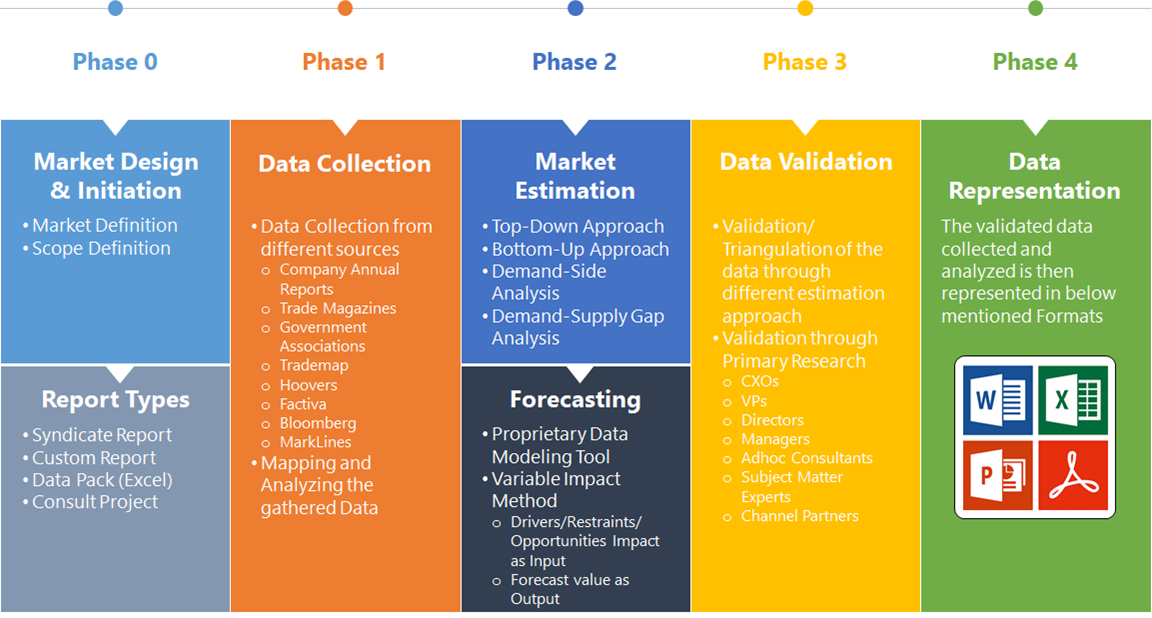The global SCADA market size is projected to reach approximately USD 64.21 billion by 2032, at a CAGR of 6.74% from 2022 to 2032. An industrial organization’s ability to monitor, collect, and process real-time data, and to operate industrial operations locally or remotely, is made possible by the SCADA system, which consists of hardware and software components. Additionally, it enables end users to report events into a log file and interact directly with equipment such as valves, sensors, pumps, and motors using human-machine interface (HMI) software. The need for industrial SCADA systems is always rising since these systems keep operations running smoothly, process data to enable wiser decisions, and notify system problems to save downtime. Also, continuous technical developments in SCADA, brought about by creative efforts from market participants, have further improved the system’s effectiveness, creating market opportunities.
COVID-19 Impact Analysis
COVID-19 had a negative impact on practically all sectors across the globe, due to supply chain disruptions and other industrial operations difficulties. The majority of businesses have either stopped all manufacturing or only do the bare minimum. In the early stages of the pandemic, governments’ responses to COVID-19, such as lockdowns and social seclusion, resulted in the shutdown of production and processing facilities. The demand for numerous input items in the industrial sector has drastically decreased since relatively few industrial operations are permitted. Given that relatively few new SCADA systems are anticipated to be implemented by these businesses during the continuing crisis, the aforementioned considerations seem essential to have an impact on the SCADA market.
Market Dynamics
Drivers
Ø Increased Use of Cloud-Based SCADA Systems
The purpose of implementing an industrial SCADA system is to manage and keep an eye on the facility’s installed transmitters and sensors. With the aid of an HMI, a user or controller manages the applications. Operators can manage applications online thanks to the combination of a SCADA system with cloud computing technology. Additionally, cloud-based SCADA systems have gained in popularity over time due to their many advantages, including scalability, ease of updating and retrieving files, and upgrading via the cloud.
Restraint:
- High investment is required for SCADA system installation and maintenance
There is a high investment required for SCADA system installation and maintenance that restrain the growth of the market. The cost of the SCADA system can be divided into two parts. One is the cost of hardware and software and the other is the cost of installation, training, and maintenance. For large systems, the cost of hardware can range from a few hundred thousand dollars to a few million dollars. The cost of software can be 20 to 30% of the hardware cost. The cost of installation, training, and maintenance can be 10 to 20% of the hardware cost. Additionally, SCADA systems can be complex to implement and manage, which can also limit their appeal. As a result, the growth of the SCADA system market may be restrained to some extent by these factors.
Opportunity:
- An increase in big data analytics
Massive development in big data and analytics has boosted the effectiveness of SCADA systems, opening up a wide range of industry potential. Analytical software solutions assist businesses in reducing errors, enhancing decision-making, and locating the source of issues. As a result, more sectors have started using these technologies to create decision-making processes. Analytics tools are now being used by automation suppliers in SCADA and advanced process control (APC).
Segment Overview
By Offering
Based on the Offering, the SCADA market is segmented based on Hardware, Software, and Services. A significant portion of the global SCADA market is anticipated to belong to the services segment. The increased demand for services that provide supervisory automation control and data acquisition end users with better efficiency, high reliability, and greater visualization is credited with driving this market growth.
By Component
Based on the Component, the SCADA market is segmented based on Human Machine Interface (HMI), Remote Terminal Unit (RTU), Programmable Logic Controller (PLC), and Others. An RTU is an electrical device that is one of the basic components of a SCADA system. It gathers information, converts it to a highly communicable format, and sends it to the primary program. This is accomplished by utilizing multiple RTUs in a SCADA system.
By End User
Based on End User, the SCADA market is segmented based on Process Industry, Discrete Manufacturing, Utilities, and Others. The Discrete Manufacturing segment is the largest contributor to the global SCADA market. This segment is expected to grow at a significant rate during the forecast period. The demand for SCADA systems in the discrete manufacturing sector is driven by the need for real-time data and process automation. These systems help discrete manufacturers to optimize their production processes and reduce downtime. Moreover, SCADA systems offer benefits such as improved product quality, reduced labor costs, and increased production efficiency.
Global SCADA Market Share, by Segmentation
Regional Analysis
The global SCADA market has been segmented into four regions: North America, Europe, Asia-Pacific, and the Rest of the World. Asia Pacific is expected to be the market leader in the adoption of SCADA, followed by Europe and the North American region.
Asia Pacific Market
Asia Pacific dominates the SCADA market. The vast majority of SCADA installations in the Asia Pacific region are in the energy sector, where they are used to monitor and control power plants, transmission and distribution networks, and oil and gas pipelines. The region’s growing industrial sector is also a major user of SCADA systems, deploying them in factories, water and wastewater treatment plants, and other industrial facilities. Government investment in infrastructure development is a key driver of SCADA market growth in the Asia Pacific region. Countries such as China, India, and Japan are investing heavily in the construction of new power plants, transmission and distribution networks, and other industrial facilities, all of which require SCADA systems.
North America Market
North America is expected to soar at a CAGR of SCADA market. This region is home to some of the world’s leading industrial and energy companies, which are increasingly turning to SCADA systems to improve efficiency and safety. SCADA systems are also being adopted in a range of other industries, such as transportation and healthcare. With the rise in industrial and infrastructure projects, the demand for SCADA systems is expected to continue to grow.
Competitive Landscape
The market comprises tier-1, tier-2, and local players. The tier-1 and tier-2 players have reached across the globe with diverse product portfolios. Companies such as IBM Corp, Hitachi LTD, OMRON, Honeywell International, and ABB LTD.dominate the global SCADA market due to strategic developments and diversified regional presence. The players are adopting various strategies, such as expansion, product launches, and partnerships, to strengthen their market position and capture a large customer base.
Prominent Players:
- IBM Corp
- Hitachi LTD
- OMRON
- Honeywell International
- ABB LTD.
- JFE Engineering Corporation
- Mitsubishi Electric Corporation
- Emerson Electric Co
- Yokogawa Electric
- Schneider Electric
Recent Development
In October 2020, Progea Group was acquired by Emerson Electric. The acquisition makes it possible to expand Emerson’s embedded software and control portfolio by incorporating Progea’s analytics, industrial visualization, and Internet of Things capabilities.
In August 2020, Schneider Electric created the next-generation EcoStruxure Power platform, which digitizes, optimizes, and simplifies electrical distribution networks to make them safer, smarter, and faster.
Scope of the Report
Global SCADA Market, by Offering
- Hardware
- Software
- Services
Global SCADA Market, by Component
- Human Machine Interface (HMI)
- Remote Terminal Unit (RTU)
- Programmable Logic Controller (PLC)
- Others
Global SCADA Market, by End User
- Process Industry
- Discrete Manufacturing
- Utilities
- Others
Global SCADA Market, by Region
- North America
- US
- Canada
- Mexico
- Europe
- UK
- Germany
- France
- Italy
- Rest of Europe
- Asia Pacific
- China
- Japan
- South Korea
- India
- Rest of Asia Pacific
- Rest of the World
| Parameters | Indicators |
|---|---|
| Market Size | 2030: $ 64.21 Billion |
| CAGR | 6.74% CAGR (2022-2030) |
| Base year | 2021 |
| Forecast Period | 2022-2032 |
| Historical Data | 2020 |
| Report Coverage | Revenue Forecast, Competitive Landscape, Growth Factors, and Trends |
| Key Segmentations | Offering, Component, End User |
| Geographies Covered | North America, Europe, Asia-Pacific, Latin America, Middle East, Africa |
| Key Vendors | IBM Corp, Hitachi LTD, OMRON, Honeywell International, ABB LTD, JFE Engineering Corporation, Mitsubishi Electric Corporation, Emerson Electric Co, Yokogawa Electric, Schneider Electric |
| Key Market Opportunities | An increase in big data analytics |
| Key Market Drivers | Increased Use of Cloud-Based SCADA Systems |
REPORT CONTENT BRIEF:
- High-level analysis of the current and future SCADA market trends and opportunities
- Detailed analysis of current market drivers, restraining factors, and opportunities in the future
- SCADA market historical market size for the year 2022, and forecast from 2021 to 2032
- SCADA market share analysis at each product level
- Competitor analysis with a detailed insight into its product segment, financial strength, and strategies adopted.
- Identifies key strategies adopted including product launches and developments, mergers and acquisitions, joint ventures, collaborations, and partnerships as well as funding taken and investment done, among others.
- To identify and understand the various factors involved in the global SCADA market affected by the pandemic
- To provide a detailed insight into the major companies operating in the market. The profiling will include the financial health of the company’s past 2-3 years with segmental and regional revenue breakup, product offering, recent developments, SWOT analysis, and key strategies.








